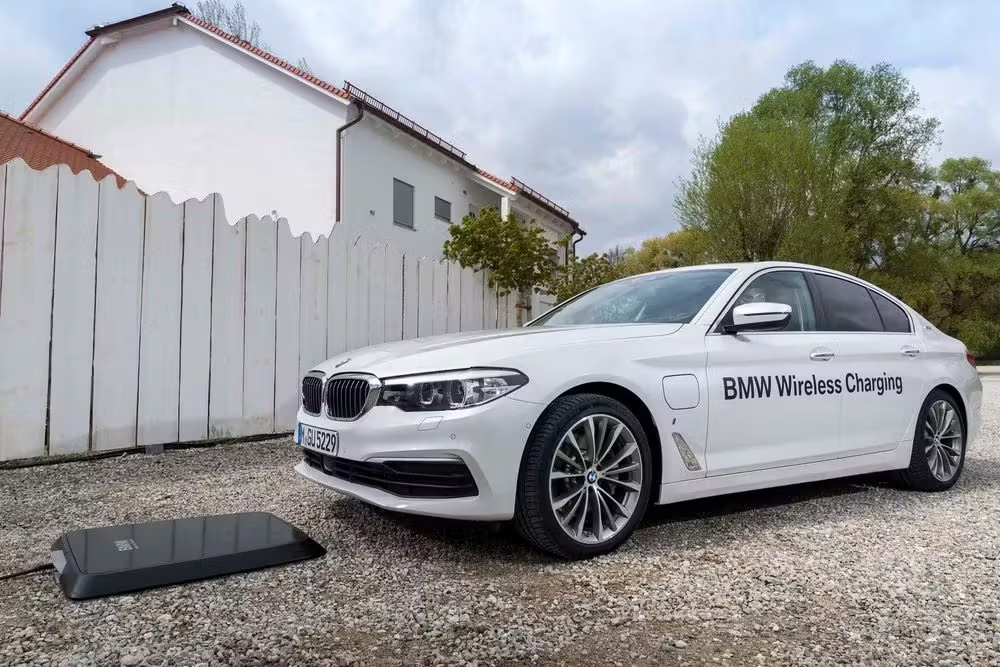In a world where convenience is king, wireless charging for electric vehicles (EVs) is making waves in urban mobility. Imagine driving home and your car automatically starts charging without plugging in a single cable—sounds like science fiction, right? As of 2023, this is becoming a reality. According to Bloomberg Green, wireless EV charging is not just a futuristic concept but an emerging trend that’s set to redefine how we power our cars in bustling cities across the globe. In this article, we will explore how wireless EV charging is transforming urban mobility, the technology behind it, its benefits, and what the future holds for cities embracing this innovation.
The Rise of Wireless EV Charging
What is Wireless EV Charging?
Wireless EV charging, also known as inductive charging, is a cutting-edge technology that eliminates the need for cables and connectors. By using electromagnetic fields, energy is transferred from a charging pad on the ground to a receiver on the vehicle. This seamless process is not only convenient but also enhances the user experience by automating the charging routine.
Key Players and Innovations
Several companies are at the forefront of this technology. In 2023, Hyundai and WiTricity announced a partnership to develop and implement wireless charging systems. Meanwhile, BMW and Tesla are investing heavily in research to integrate wireless charging capabilities into their EV models. According to InsideEVs, Volkswagen is also piloting wireless charging in select urban areas to test its feasibility and performance.
How Wireless Charging Works
- Installation of Charging Pads: Charging pads are embedded in parking spaces or driveways.
- Alignment and Charging: As the vehicle parks over the pad, the system aligns automatically to start charging.
- Energy Transfer: Electromagnetic fields transfer energy from the pad to the vehicle’s receiver.
- Charging Completion: The process stops automatically once the vehicle is fully charged.
Benefits of Wireless EV Charging
Convenience and Efficiency
- No More Cables: Forget about tangled cables and connectors. Wireless charging offers a hassle-free experience.
- Time-Saving: Automated charging processes mean you can simply park and walk away, saving valuable time.
- Enhanced Safety: Reduces risks associated with physical connectors, such as tripping hazards or weather-related issues.
Urban Integration
- Space Optimization: Charging pads can be installed in parking lots, streets, and garages without requiring additional space.
- Scalability: Easily scalable for urban settings, facilitating widespread adoption.
- Aesthetic Appeal: Wireless systems blend seamlessly into urban landscapes, maintaining city aesthetics.
Practical Guide to Wireless Charging
How to Get Started
- Check Compatibility: Ensure your EV model supports wireless charging. Brands like Hyundai, BMW, and Tesla are currently offering compatible models.
- Locate Charging Stations: Use apps like PlugShare or ChargePoint to find wireless charging stations in your area.
- Installation at Home: Consider installing a home wireless charging pad. Contact providers like WiTricity for installation details and costs.
Where to Buy
- Online Platforms: Retailers like Amazon and Best Buy offer wireless charging pads for home installation.
- Authorized Dealers: Visit authorized EV dealers for in-depth consultations and purchase options.
What to Compare
- Charging Speed: Compare the charging time of different wireless systems.
- Installation Costs: Evaluate the costs involved in setting up a wireless charging system at home or work.
- Brand Reliability: Choose systems from reputable brands known for quality and durability.
The Future of Urban Mobility with Wireless Charging
Transformative Potential
The integration of wireless charging is set to revolutionize urban mobility by supporting the mass adoption of EVs. According to Reuters Mobility, cities like Oslo and Beijing are already experimenting with wireless charging on public roads, setting a precedent for future urban planning.
Environmental Impact
Wireless charging could reduce the carbon footprint by streamlining the charging process and encouraging more people to switch to EVs. The International Energy Agency (IEA) suggests that widespread wireless charging could support global efforts to decrease greenhouse gas emissions by 2030.
Overcoming Challenges
While promising, wireless EV charging still faces challenges, such as higher installation costs and the need for standardization across different models and regions. However, with ongoing research and development, these hurdles are expected to diminish over time.
Conclusion
Wireless EV charging is not just a technological novelty; it’s a game-changer for urban mobility in 2023. By offering unparalleled convenience and efficiency, it is poised to accelerate the transition towards a more sustainable future. As cities continue to adopt this innovative solution, we can expect cleaner, more efficient urban environments. Are you ready to embrace the future of EV charging? Share your thoughts and join the conversation on how wireless charging can transform your daily commute. With continuous advancements, who knows what further innovations lie just around the corner?

